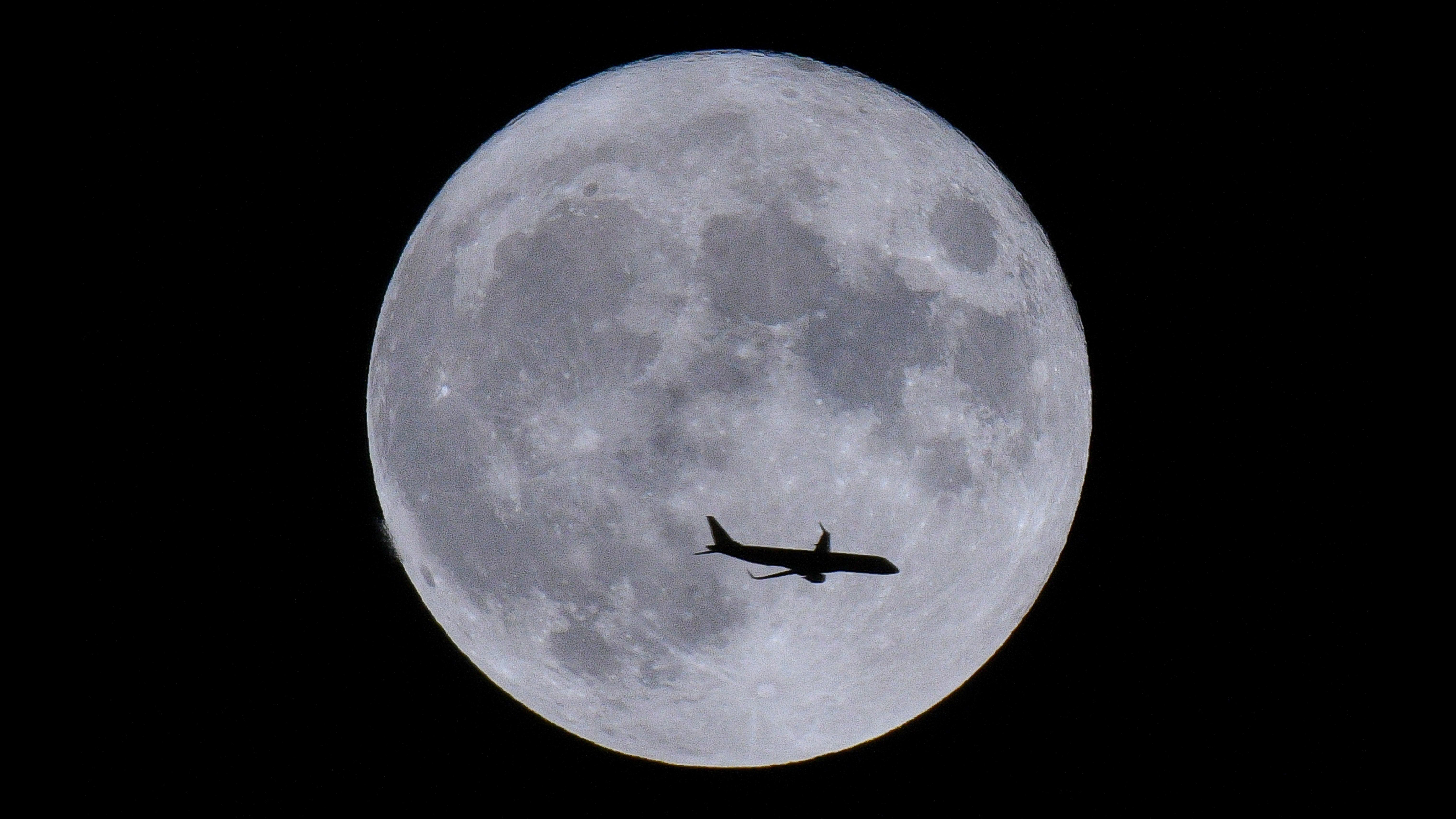The best fisheye lenses: see the bigger picture
The best fisheye lenses can show you a whole new ultra-wide-angle perspective of the world around you and your subjects
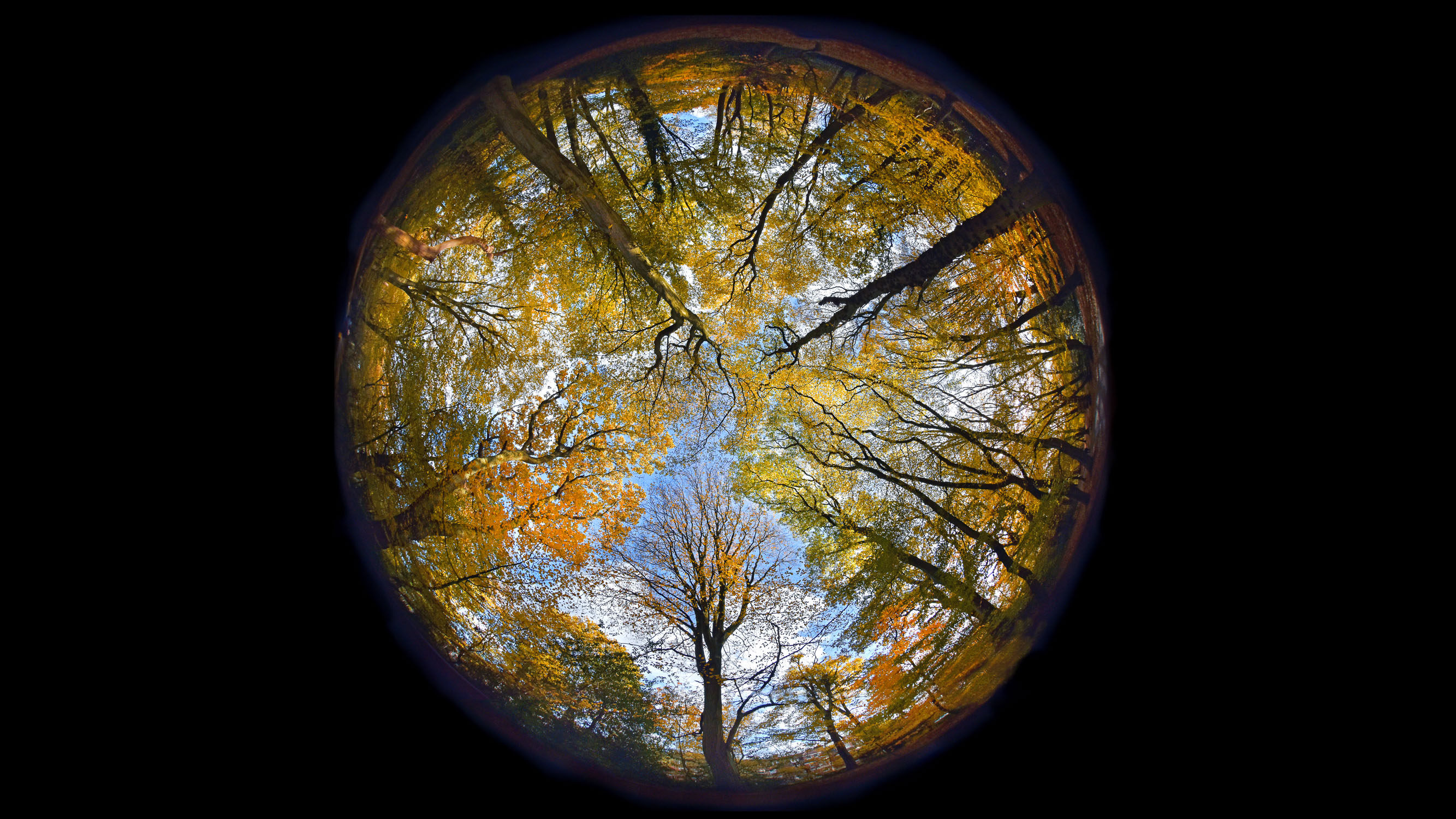
The best fisheye lenses can seriously improve your photography if you're wanting an enormous viewing angle and wider shots. Fisheye lenses were invented to enable meteorologists to keep a close watch on the weather, but these lenses soon found favor with creative photographers, vloggers, and filmmakers.
Even the widest of regular wide-angle lenses can't compete with the aesthetic of a fisheye lens. Whereas regular wide-angle lenses have a rectilinear design that aims to keep distortion to a minimum, the curvilinear nature of fisheye lenses produces extreme barrel distortion, giving a bold and unique look to images.
Nowadays, fisheye lenses have grown popular for underwater shooting, extreme sports, astrophotography and even creating virtual environments.
But what are the best fisheye lenses? The first thing you need to realize is that there are two main types of fisheye lenses… full-field diagonal fisheyes, and circular fisheyes.
Diagonal fisheyes (also sometimes confusingly called ‘full-frame’ fisheyes) produce an image circle that’s large enough to cover the entire image sensor. Whether designed for a full-frame or crop sensor camera, the resulting image has a regular, full-sized rectangular shape. However. It only gives a 180-degree viewing angle when measured on the horizontal of the frame.

A diagonal fisheye delivers rectangular images that stretch from corner to corner of the image frame

A circular fisheye gives you a round picture within the boundaries of the image sensor
Circular fisheyes produce a smaller image circle that fits within the boundary of the image sensor. In this case, you end up with a smaller, circular image but with an even wider viewing angle, equating to a full 180 degrees in both vertical and horizontal planes.
The best fisheye lenses
Why you can trust Digital Camera World
Fisheye zooms
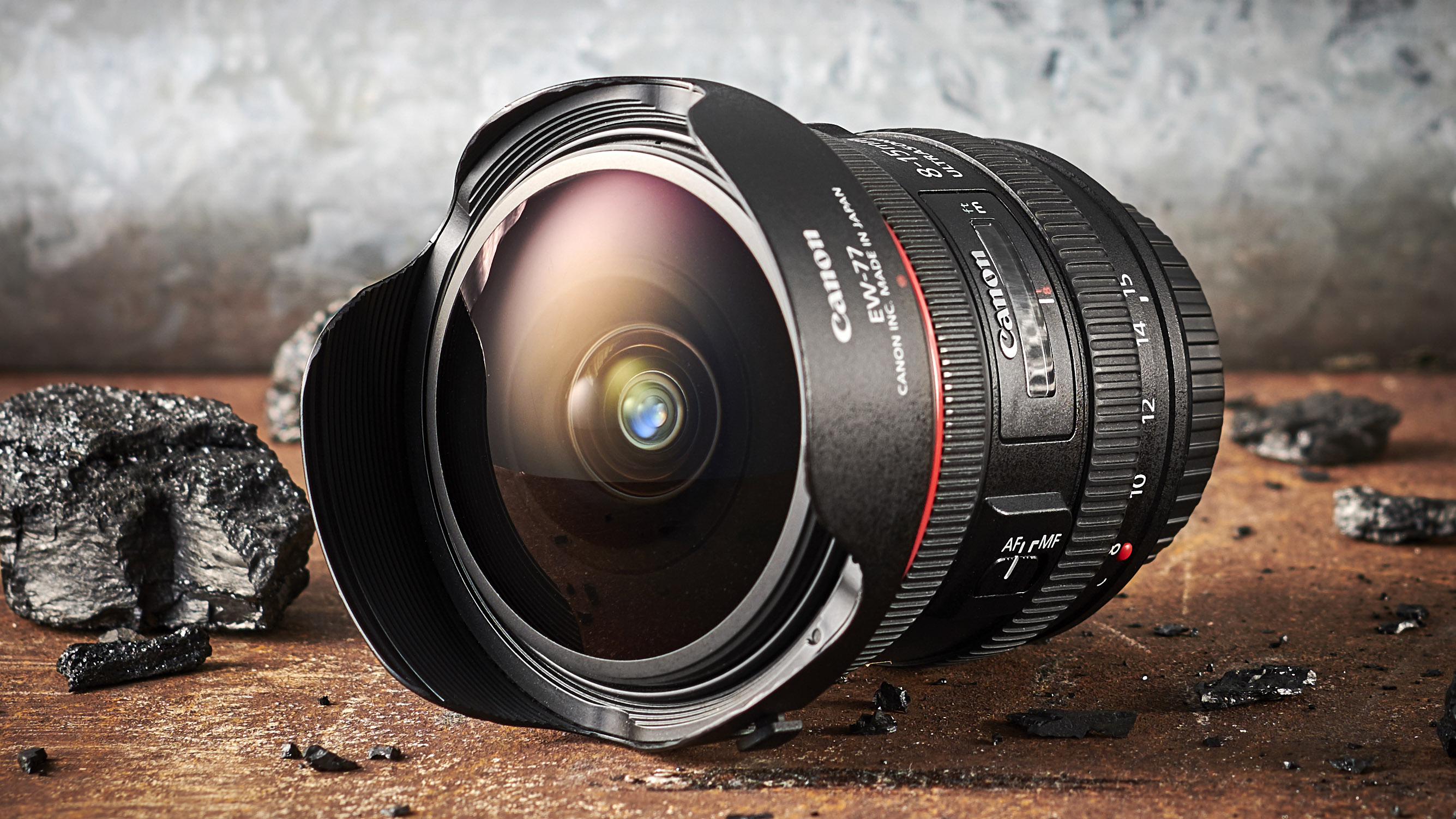
Specifications
Reasons to buy
Reasons to avoid
On a full-frame Canon SLR, this lens works as a circular fisheye at its shortest 8mm focal length. Zoom to the 15mm end of the range and it becomes a diagonal fisheye that still gives an extremely wide viewing angle, complete with the pronounced barrel distortion associated with curvilinear lenses.
It's an easy lens to live with, especially as it's like having two fisheye lenses in one. Because the bulbous front element protrudes from the lens, a two-stage lens cap is supplied, the barrel section of which also acts as a lens hood when used at 15mm. However, you need to remove it when shooting at shorter focal lengths. See our full Canon EF 8-15mm f/4L Fisheye USM lens review.
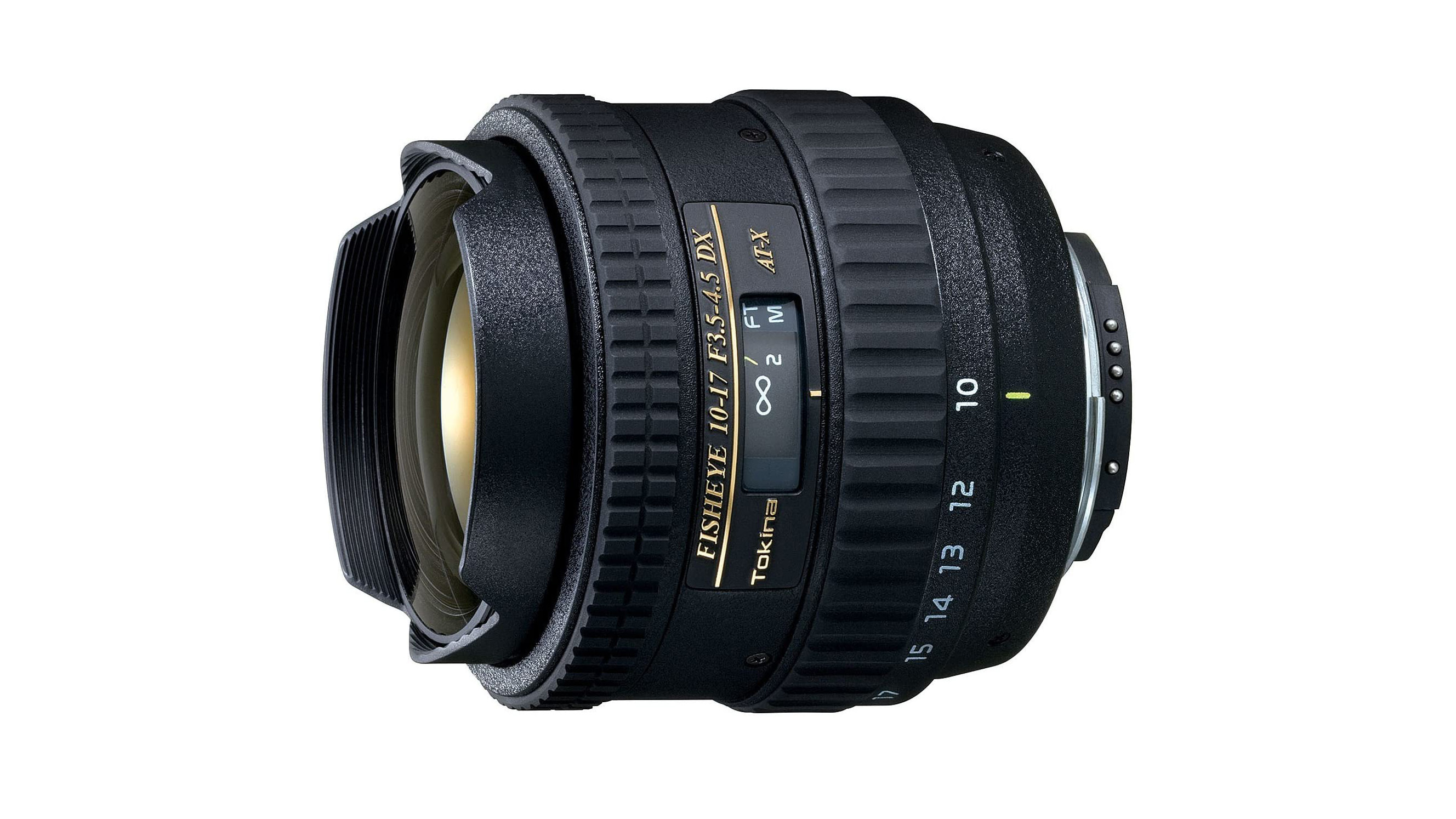
2. Tokina AT-X 107 DX Fisheye 10-17mm f/3.5-4.5 AF
Specifications
Reasons to buy
Reasons to avoid
Unlike the Canon 8-15mm fisheye lens that zooms from a circular to a diagonal fisheye effect on full-frame bodies, this Tokina delivers sensor-filling diagonal coverage at all zoom settings. It’s designed for APS-C rather than full-frame SLRs, where it gives a 180-degree viewing angle at its 10mm focal length, shrinking to 100 degrees at 17mm.
The viewing angles are much wider than when using the 10-17mm range of a rectilinear wide-angle zoom, and images shot with the Tokina have the trademark extreme barrel distortion of curvilinear lenses. Even so, the fisheye effect is lessened at the long end of the zoom range.
Exposure control is fully automatic in both Canon and Nikon mount editions, but the Nikon-fit version lacks an internal autofocus motor, so only manual focus is available on bodies from the D3 and D5 series and older entry-level SLRs.
Diagonal fisheye primes
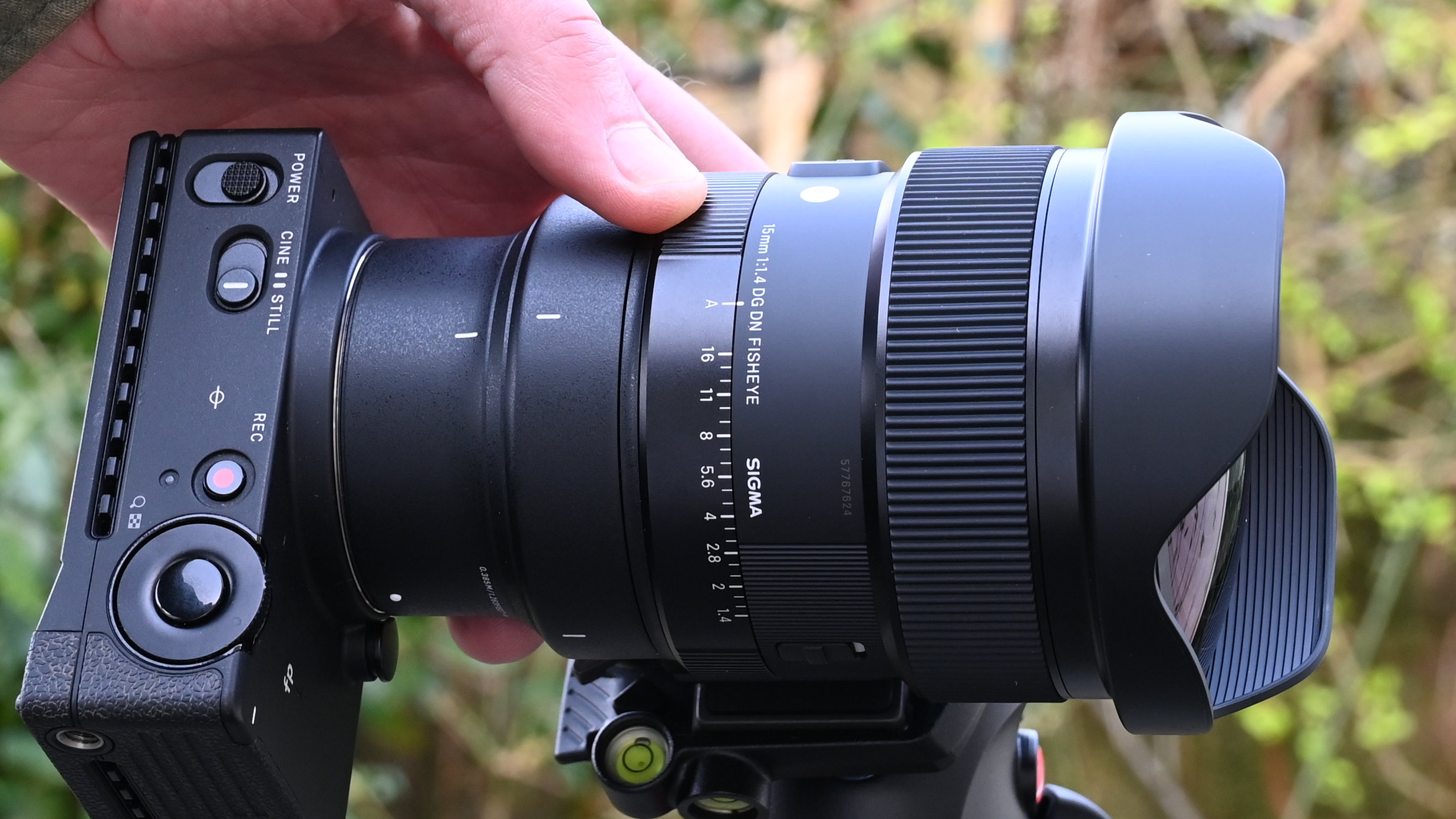
Specifications
Reasons to buy
Reasons to avoid
I’ve seen some seriously small fisheye lenses over the years. They tend to be very much more compact and lightweight than rectilinear ultra-wide-angle prime and zoom lenses. This one is a comparative heavyweight and comes complete with a tripod mounting ring that has an Arca-Swiss profile. I like that that the ring is completely removable and the lens comes with a rubber band that you can slip over in its place, more ideal for handheld shooting.
The optical design is relatively complex for a fisheye lens, based on 21 elements arranged in 15 groups. To boost performance, the optical path includes three SLD (Special Low Dispersion) elements and four top-grade FLD (‘Fluorite’ Low Dispersion) elements. The lens is also uncommonly fast for a fisheye, with an f/1.4 aperture. It's a seriously pro-grade lens with build quality, performance and a price tag to match.
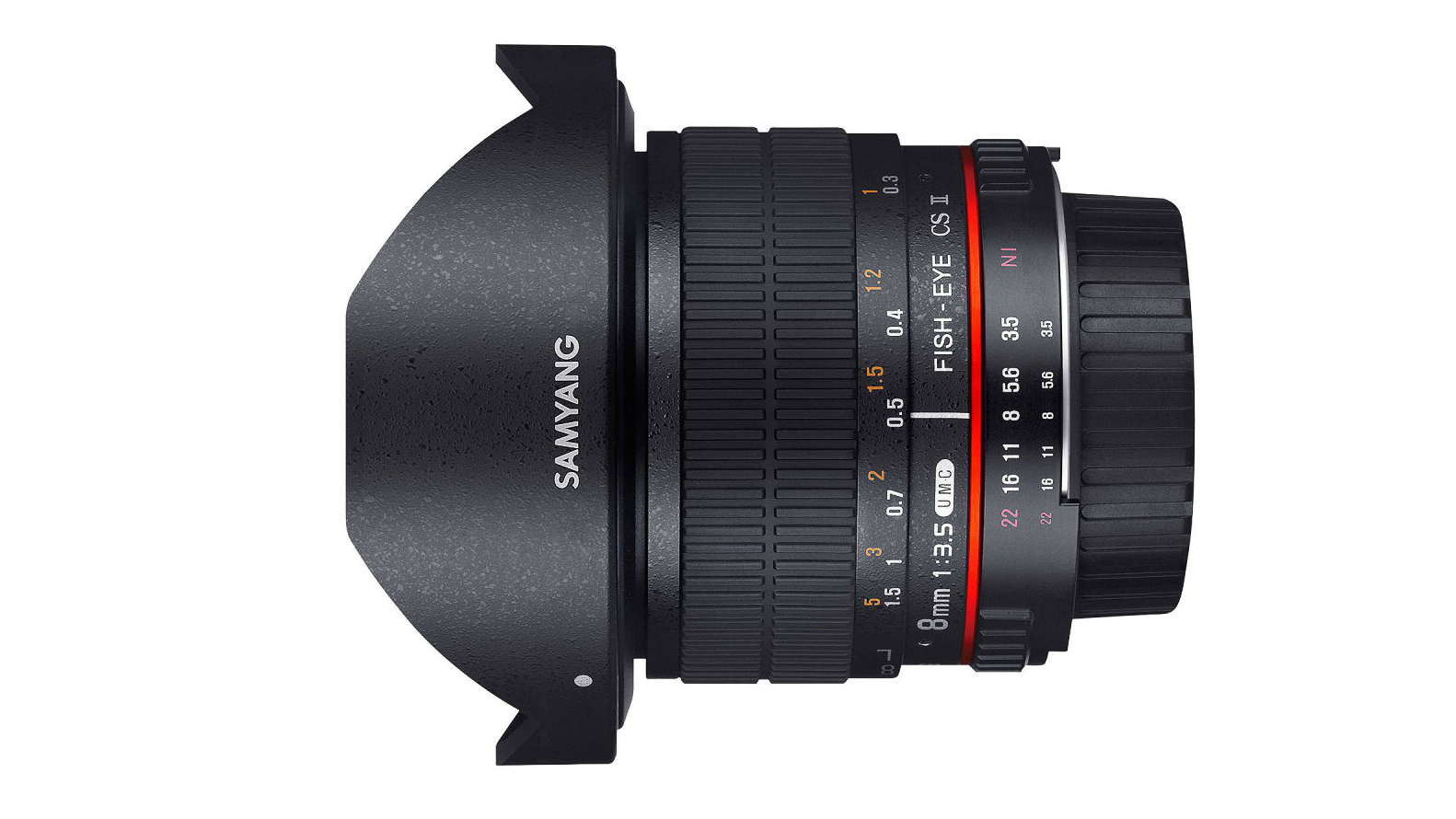
Specifications
Reasons to buy
Reasons to avoid
This is essentially a crop-sensor version of the Samyang 12mm f/2.8 ED AS NCS diagonal fisheye for full-frame cameras. As such, it has a shorter focal length to enable a similar 180-degree viewing angle, measured on the diagonal of the frame.
Mount options are many and varied, including Canon EF-S and EF-M, Fujifilm X, MFT, Nikon DX, Pentax K, Sony A, Sony E, and Samsung NX. Conversely, while the Samyang 12mm full-frame compatible lens is marketed in a selection of mount options that only feature crop-sensor cameras, this crop-format lens can also be used on full-frame bodies, where available in the camera range.
With this in mind, a ‘DH’ (detachable hood) option has recently been added. Both versions are optically identical but the DH edition avoids vignetting when shooting with a full-frame camera. This lens is sold under the Rokinon brand in North America.
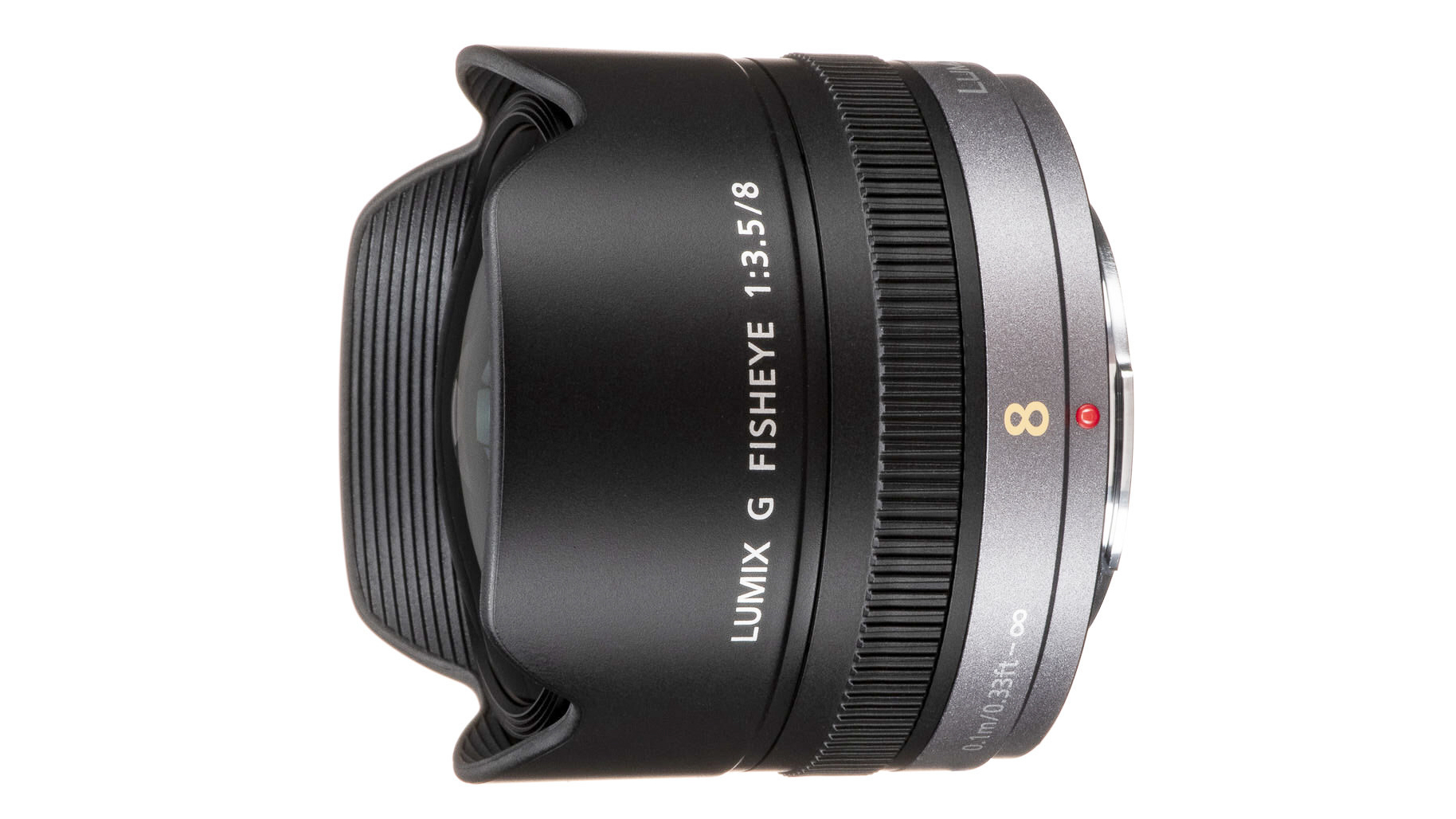
5. Panasonic 8mm f/3.5 Lumix G Fisheye Micro
Specifications
Reasons to buy
Reasons to avoid
Whereas lenses like the Lensbaby circular fisheye and Samyang 8mm diagonal fisheye are available in a Micro Four Thirds mount option, this Panasonic diagonal fisheye is designed exclusively for MFT cameras - making it suitable for use on Olympus OM-D and PEN cameras, the Blackmagic PCC 4K, and Panasonic G-range cameras.
It’s amazingly small and lightweight, measuring just 52mm in length and weighing a mere 165g. Even so, it feels solid and well-built. The fixed hood gives some protection to the protruding front element although the lens isn’t weather-sealed. Autofocus is fast and the short minimum focus distance of 10cm enables extreme close-ups.
Whereas many MFT format lenses are distortion-free, thanks partly to in-camera corrections, the exaggerated barrel distortion of this fisheye lens is thankfully clear to see.
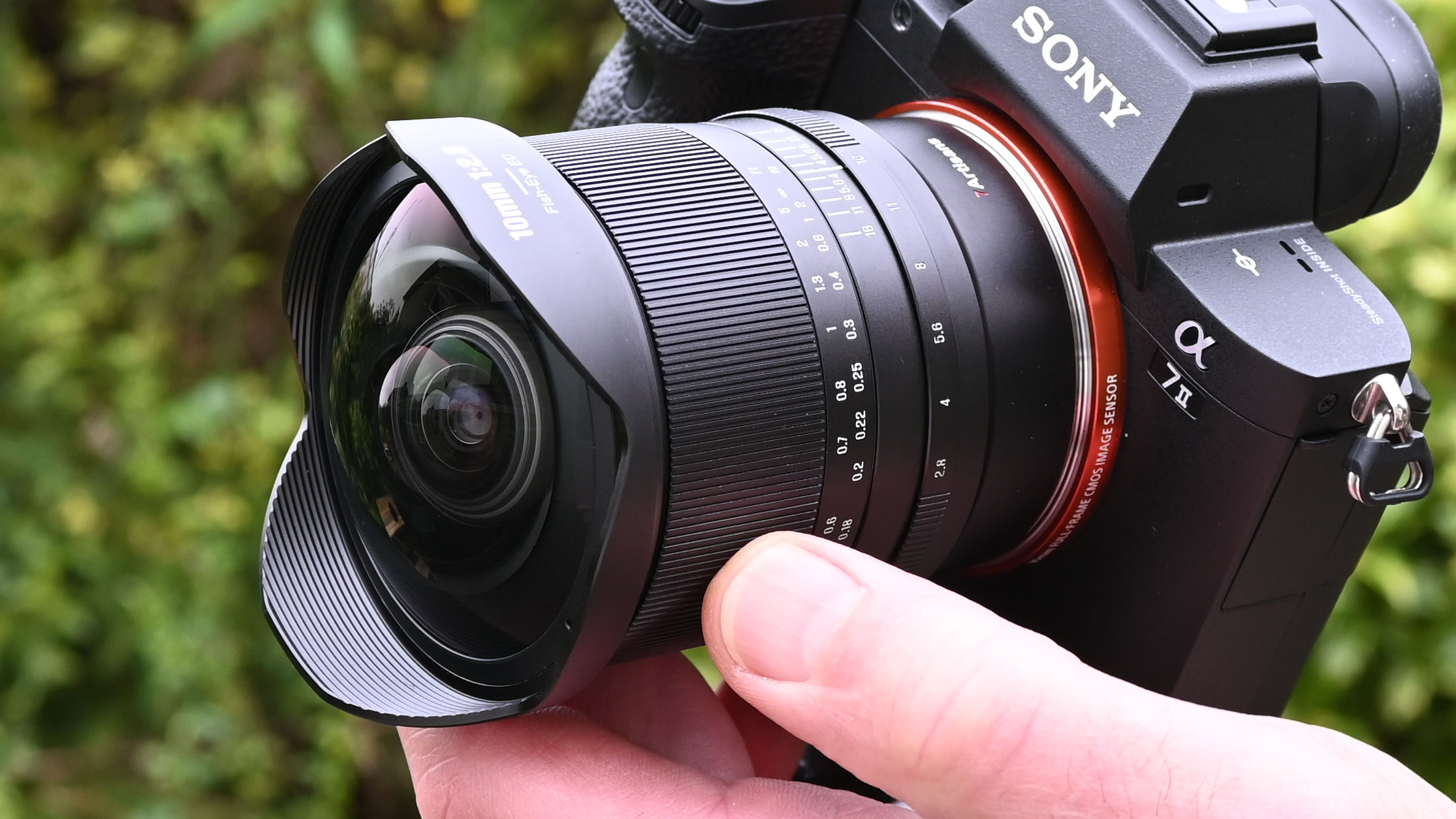
Specifications
Reasons to buy
Reasons to avoid
Although full-frame mirrorless cameras are increasing in popularity, Canon, Nikon, and Sony haven't gotten around to making fisheye lenses for these models yet. So this 7artisans model is of great interest to anyone who has bought a Canon RF, Leica L, Nikon Z, and Sony FE mount camera.
It is a fully-manual lens - but in my tests, I was impressed by the sharpness and lack of color fringing. It is solidly built too considering the price, with the barrel, built-in lens hood, and mount all being made of metal.
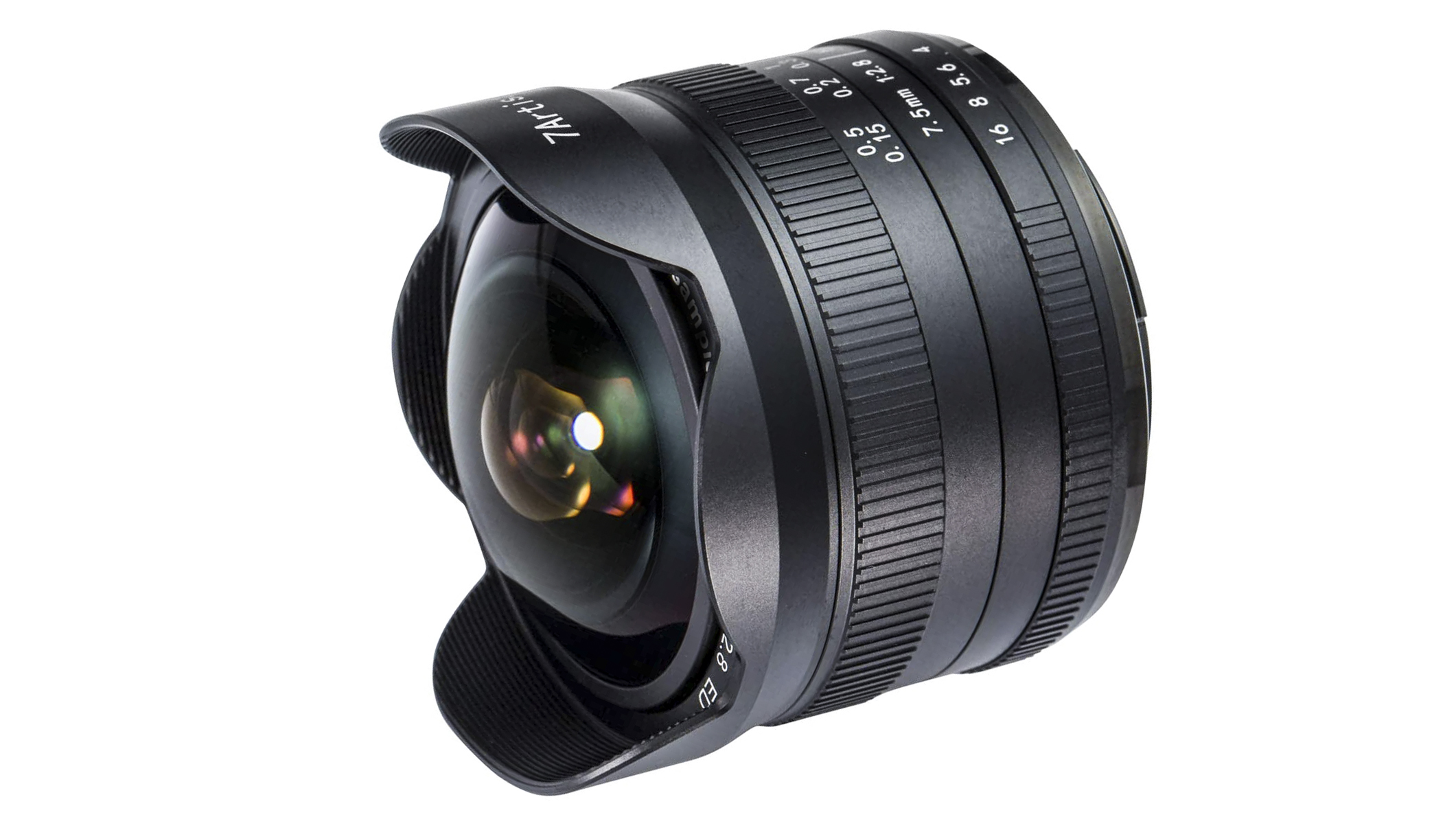
7. 7artisans 7.5mm F2.8 Mark II
Specifications
Reasons to buy
Reasons to avoid
Who says a new lens has to break the bank? This diagonal fisheye can be had for a bargain price, yet you'll still get the same bulging fisheye wow factor as you'd get from a much pricier optic. So what's the catch? Well, predictably this is a fully manual lens, meaning you'll need to focus manually and set your exposure manually, as there are no electronic contacts to transmit exposure metering information.
However, this needn't be a deal breaker, as the depth of field is large enough at such short focal lengths to make manual focusing fairly easy. Its diagonal fisheye field of view has been tailored to APS-C and Micro Four Thirds mirrorless cameras, offering a similar effective field of view to a 10mm full-frame fish-eye lens.
Circular fisheye primes
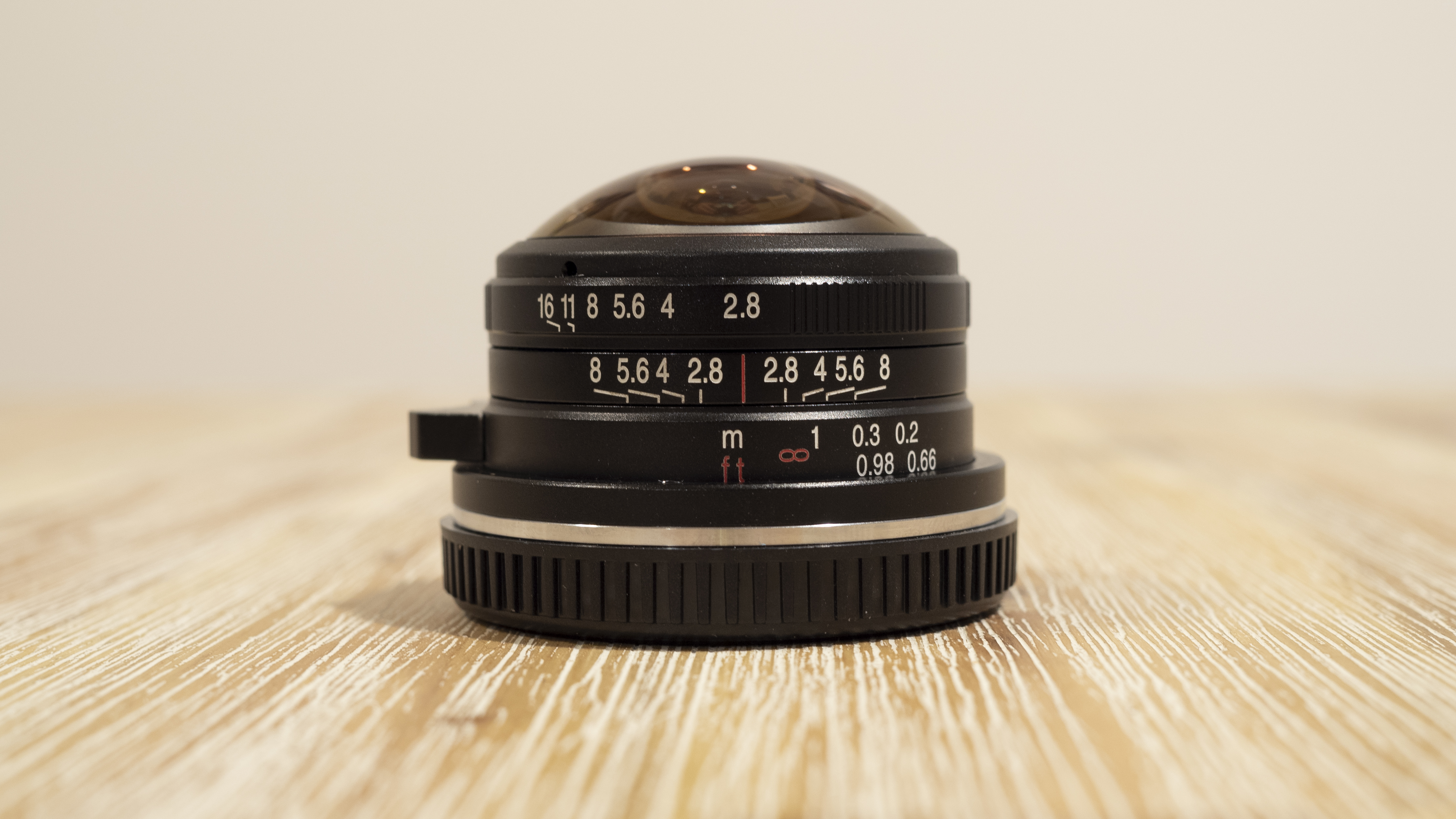
Specifications
Reasons to buy
Reasons to avoid
Originally released for the Micro Four Thirds mount, this compact circular fisheye is now available for Canon EF-M, Fujifilm X, and Sony E cameras as well. For the cost, you might expect a plasticky construction, but in our tests, we were impressed by the build of this lens.
It is really small too - so easy to carry around just in case you find a use for it when traveling. Its angle of view is wider and offers a 210° view of the world - but this does mean you have to be very careful to ensure you do not appear in your pictures when you least expect it.
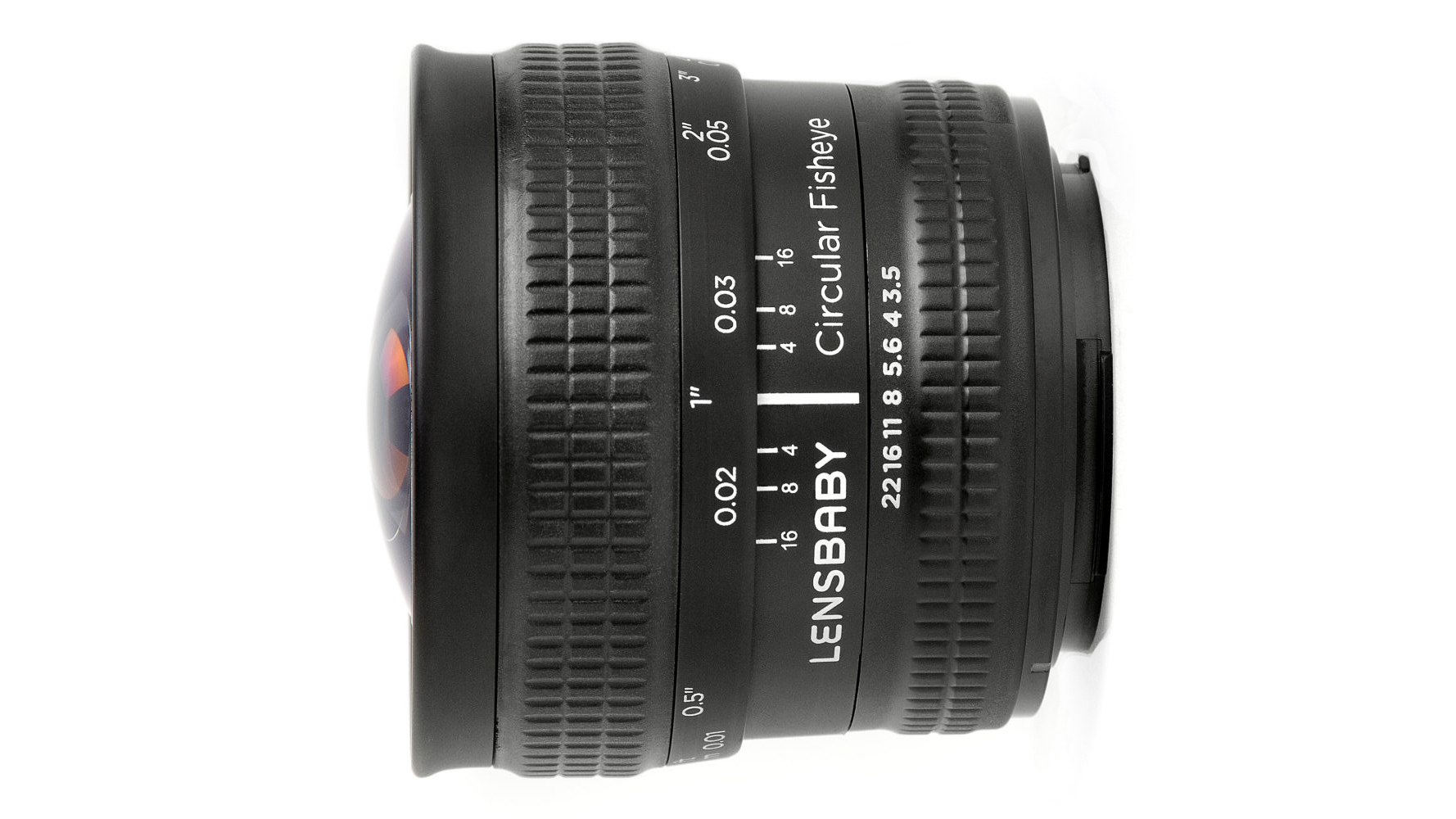
9. Lensbaby Circular Fisheye 5.8mm f/3.5
Specifications
Reasons to buy
Reasons to avoid
Circular fisheye lenses for APS-C format cameras are pretty thin on the ground but this 5.8mm f/3.5 Lensbaby is available in a variety of mount options including Canon EF-S, Fujifilm X, Nikon DX, and Sony E. It’s also available in Micro Four Thirds fit, catering to an even smaller image sensor.
Highlights include an oversized 185-degree viewing angle and ultra-short minimum focus distance, at which the front of the lens comes to a distance of just 6mm from the subject.
However, autofocus is unavailable in any of the mount options and you can typically only use the lens in aperture-priority and manual shooting modes. You might also need to enable the ‘shoot without a lens attached’ option in the camera’s menu system, as there are no electronic connections.
How we test lenses
We test lenses using a mix of both real-world sample images and lab tests. Our lab tests are carried out scientifically in controlled conditions using the Imatest testing suite, which consists of custom charts and analysis software that measures resolution in line widths/picture height, a measurement widely used in lens and camera testing. We find the combination of lab and real-world testing works best, as each reveals different qualities and characteristics.
Get the Digital Camera World Newsletter
The best camera deals, reviews, product advice, and unmissable photography news, direct to your inbox!
Matthew Richards is a photographer and journalist who has spent years using and reviewing all manner of photo gear. He is Digital Camera World's principal lens reviewer – and has tested more primes and zooms than most people have had hot dinners!
His expertise with equipment doesn’t end there, though. He is also an encyclopedia when it comes to all manner of cameras, camera holsters and bags, flashguns, tripods and heads, printers, papers and inks, and just about anything imaging-related.
In an earlier life he was a broadcast engineer at the BBC, as well as a former editor of PC Guide.

